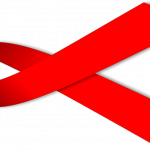 Two HIV-infected men who had bone marrow transplants to treat their blood cancers have stopped taking their anti¬retroviral drugs and still show no sign of the virus, according to research released Wednesday that experts say represents significant developments in understanding the biology of the virus and the ongoing search for a cure.
Two HIV-infected men who had bone marrow transplants to treat their blood cancers have stopped taking their anti¬retroviral drugs and still show no sign of the virus, according to research released Wednesday that experts say represents significant developments in understanding the biology of the virus and the ongoing search for a cure.
The researchers from Brigham and Women’s Hospital in Boston told an international AIDS conference in Malaysia that one patient stopped taking his antiretroviral therapy 15 weeks ago as of Wednesday and the other, seven weeks ago.
In patients who stop taking medication, the virus comes back in two to four weeks. The researchers described the results as “exciting” but said they do not indicate that the men have been “cured.” Follow-up of at least one year is needed to understand the full impact, they said.
Nevertheless, AIDS experts said the findings are important because they suggest that under the right conditions, HIV could be eradicated.
“It’s a proof of concept . . . that under certain circumstances, even though these were very unusual circumstances, that you could conceivably rid the body of HIV,” Anthony Fauci, director of the National Institute of Allergy and Infections Diseases at the National Institutes of Health, said in an interview. “The thing that needs to be figured out is how you can do it without putting the patient through such a risky experience. Whether that’s possible, we don’t know.”
He said the public shouldn’t misinterpret the advance as a “cure” for HIV, or human immunodeficiency virus.
“You’re talking about a highly specific, very special situation that’s not really practical for the millions and millions of people who are HIV-infected, who are on therapy and would like to get off therapy,” he said.
The Boston patients had “very serious complications” and needed “very dramatic” treatment, Fauci said. That included chemotherapy, followed by treatment to suppress the body’s immune system before performing a stem cell transplant. Such intense and risky treatments simply wouldn’t make sense for most HIV patients, he said. The current therapy — usually one pill a day that combines three anti¬retroviral drugs — is still considered the most effective treatment, as long as patients take their medication daily.
A true cure could be achievable, he said. But it would need to be a treatment that’s safe, scalable and less harmful than current therapies. “We have to make sure the cure isn’t worse than the disease,” he said.
Until now, researchers have been unable to replicate the success of Timothy Ray Brown, the “Berlin patient,” the first person reported to be cured of HIV. Brown had a stem cell transplant in 2007 to treat his leukemia, and two years later, he was reported by his German doctors to have been cured of HIV. Brown’s doctors used a donor who had a rare genetic mutation whose cells could not be infected with HIV.
But researchers thought it might be possible to achieve similar results with ordinary donor cells if the patients stayed on their anti¬retroviral regimen during the transplant and for a time afterward to protect new cells from being infected by the virus. The latest results suggest that it worked.
Source: The Washington Post

















